Best Sonos speakers in 2025 for every budget
From portable smart speakers to cinematic soundbars, there’s a best Sonos speaker for everyone
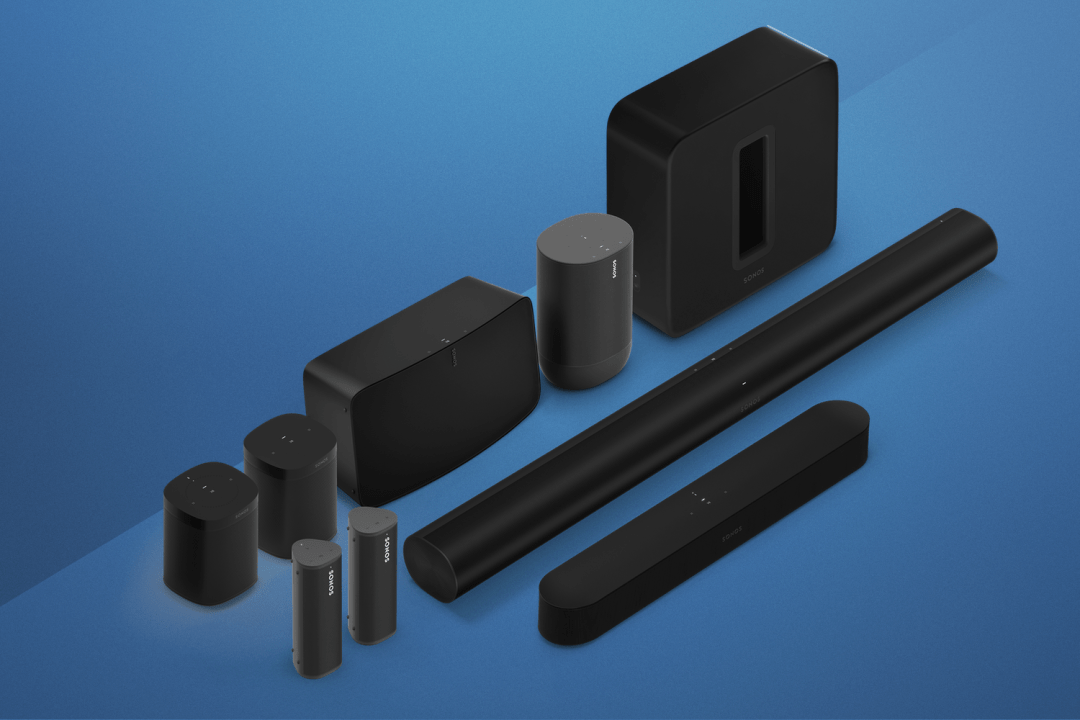
Want sweet beats throughout your house? Sonos is the original multi-room music maestro – and its wireless speaker and soundbar lineup has never looked more comprehensive. Here’s our guide to picking the best Sonos gear for your home.
From soundbars to subwoofers to portable speakers, there’s now a Sonos for every space, indoors and out. Whether you sync a stereo pair or hook up a bunch via Wi-Fi, the Sonos system makes it a cinch to bring tunes to every room.
Not sure where to start? Bedroom, living room, garden: we’ve tested the best Sonos speakers in every position – and recommended our favourites in the list below. So whether you want better audio for your TV, a smart wireless speaker to usurp your Hi-Fi or a high-end portable Bluetooth speaker you’ll find your ideal Sonos here.
What’s the best Sonos speaker?
We think the Era 300 (buy now) is the best Sonos speaker you can buy. Its big draw, beyond its unusual form factor, is its ability to offer immersive, room-filling sound, thanks to support for spatial audio in the form of Dolby Atmos Music. The result is rich sound, a wide soundstage, and punchy bass, all presented in tight, crisp clarity.
Other Sonos speaker recommendations
The Sonos Era 100 (buy now) is a capable multi-room speaker with a tiny footprint. As well as Wi-Fi streaming from the likes of Spotify, YouTube Music and Amazon, you also get Bluetooth support.
The Sonos Arc Ultra (buy now) delivers big-screen sound to complete the cinematic experience. It packs Dolby Atmos for truly immersive audio.
The Sonos Roam (buy now), at 430g and compact at 17cm tall, is a properly portable speaker. There’s Bluetooth for easy streaming, but the Move also features Wi-Fi connectivity for easy integration into your Sonos setup.
The Sonos One Gen 2 (buy now) is the most affordable option from Sonos. It’s now been replaced by the Era 100, but the One is still a great choice if you want to enter the Sonos ecosystem on a budget.
The best Sonos speakers you can buy today:
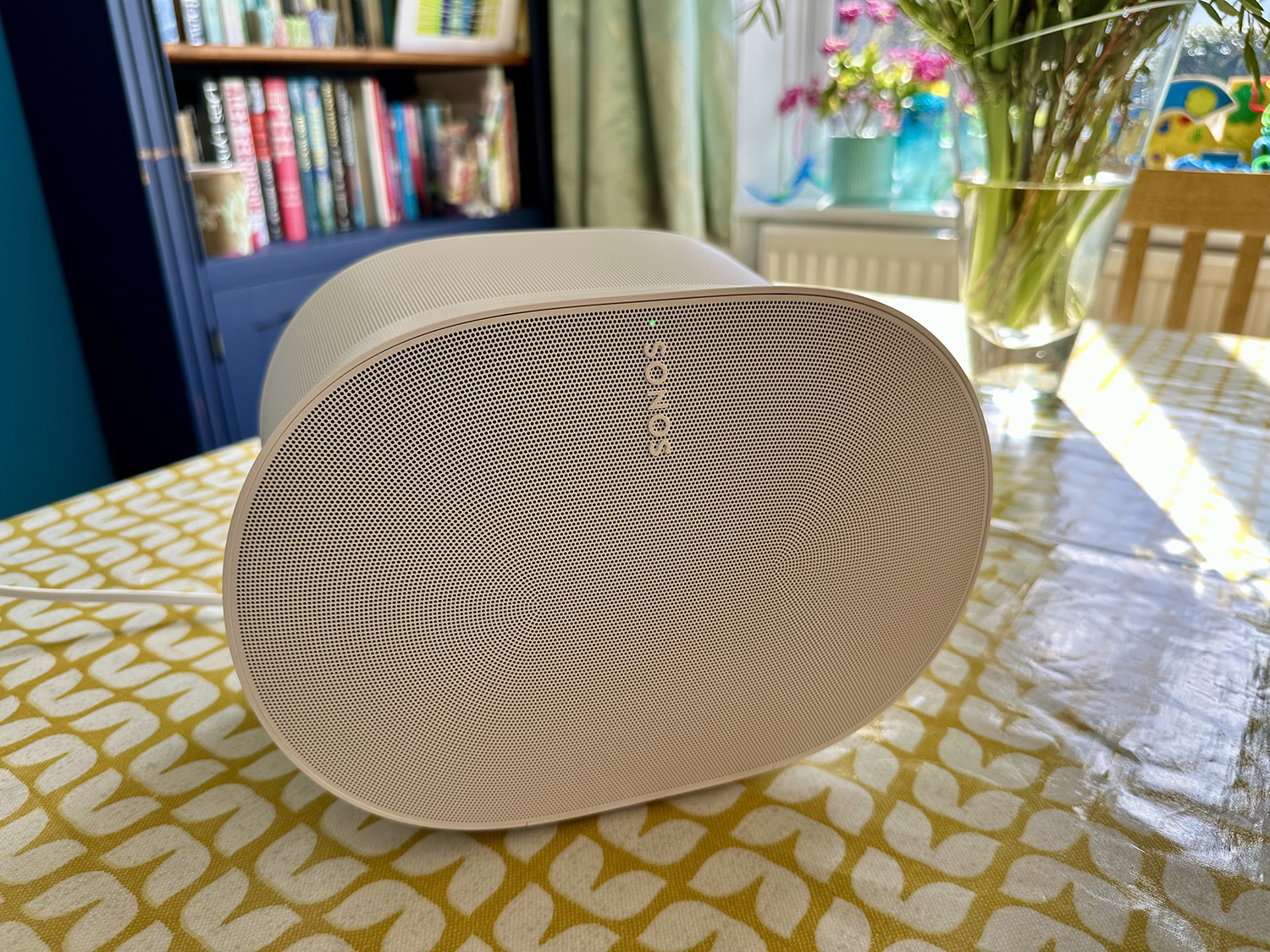
1. Sonos Era 300
Stuff Verdict
Unashamedly premium and unashamedly brilliant, this latest Sonos will bring a big smile to your face
Pros
- Wide, clean and powerful sound
- Flexible playback including Bluetooth
Cons
- Difficult to ensure spatial versions of tracks are being played
- No Google Assistant
| Sonos Era 300 specs | |
|---|---|
| Dimensions | 160x260x185mm |
| Weight | 4.47kg |
| Speakers | 6x cladd D amplifiers, 2x midwoofers, 4x tweeters |
| Connectivity | Wi-Fi, ethernet, AirPlay 2, Spotify Connect |
| Voice assistant | Alexa, Sonos Voice Control |
The Era 300 joins its smaller Era 100 sibling as one of Sonos’ newest speakers. Its big draw (beyond its unusual form factor), is its ability to offer immersive, room-filling sound, thanks to support for spatial audio in the form of Dolby Atmos Music. The result is rich sound, a wide soundstage, and punchy bass, all presented in tight, crisp clarity. Non-Dolby Atmos Music is a treat to listen to as well, making it a superb all-rounder.
Android fans can join their iPhone-toting counterparts with some Sonos room-tuning action, while voice assistance is taken care of with either Sonos Voice Control or Alexa. If your pockets are deep enough, you can use a pair of Era 300s as supplemental rear speakers for compatible Sonos soundbars like the Sonos Arc or Beam Gen 2 as well.
With plenty of power, Sonos quality, and an eye-catching design, the Era 300 is an ideal choice for those looking to enter (or expand) the Sonos ecosystem.
- Read more: Sonos Era 300 review
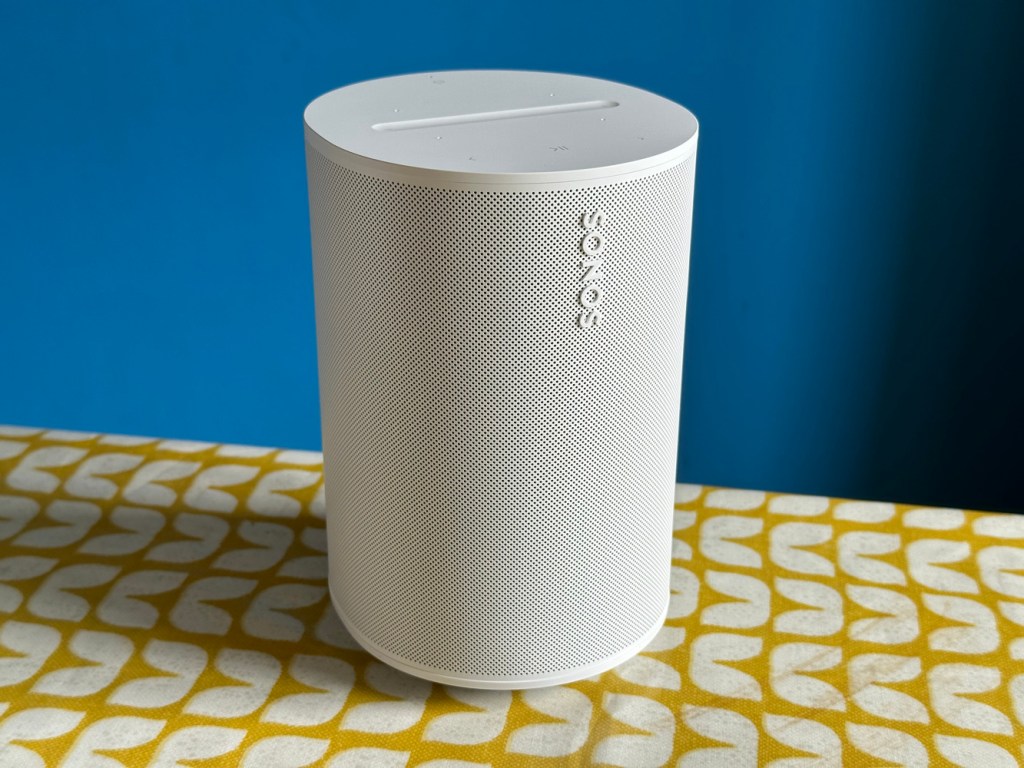
2. Sonos Era 100
Stuff Verdict
The most classy smart speaker you can get for the price – and it’s even better than the Sonos One
Pros
- Improved sound quality
- Brilliant smart speaker, now with Bluetooth
Cons
- Echo Studio is a formidable rival
- No Google Assistant
| Sonos Era 100 specs | |
|---|---|
| Dimensions | 183x131x120mm |
| Weight | 2kg |
| Speakers | 3x Class D amps, 2x tweeters, 1x woofer |
| Connectivity | Wi-Fi 6, Bluetooth 5.0, AirPlay 2, Spotify Connect, USB-C |
| Voice assistant | Alexa, Sonos Voice Control |
The new Sonos Era 100 replaces the now-discontinued Sonos One. New to its bag of tricks is Bluetooth support, which means you’re no longer restricted to Wi-Fi streaming services like Spotify or Amazon Music. Apple AirPlay 2 also remains, if that’s your preferred option.
Unlike the more expensive Sonos Era 300 above, the Era 100 lacks support for Dolby Atmos Music. It still packs a punch though, thanks to a 25% larger mid-woofer, two angled tweeters for stereo performance, and three class-D amps.
Sonos Voice Control and Amazon Alexa are also included, as is the ability to pair up two Era 100 speakers for true stereo sound. Overall, it’s a worthy successor to the Sonos One.
- Read more: Sonos Era 100 review
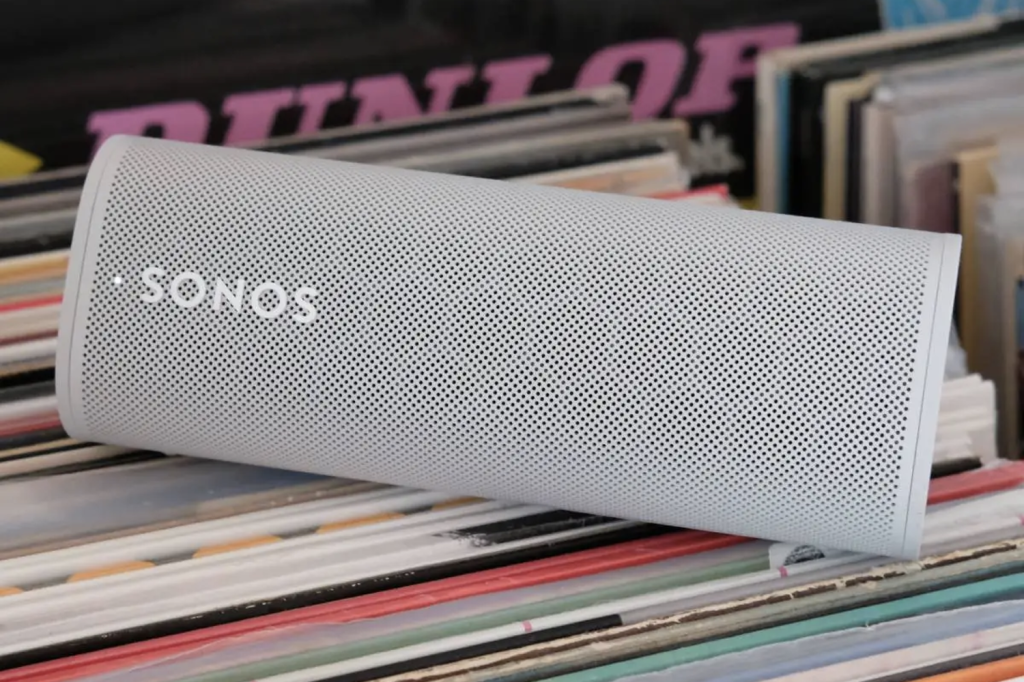
3. Sonos Roam
Stuff Verdict
A smart, stylish portable speaker with solid sound quality: the Sonos Roam ticks all the right boxes
Pros
- Great design
- Excellent connectivity options
- Lightweight
Cons
- Bass is a touch gratuitous
| Sonos Roam specs | |
|---|---|
| Dimensions | 168x62x60mm |
| Weight | 430g |
| Speakers | 1x midwoofer, 1x tweeter |
| Connectivity | Wi-Fi, Bluetooth 5.0, USB-C, AirPlay 2, Spotify Connect |
| Voice assistant | Alexa, Google Assistant |
The Move (below) might have been the first fully wireless Sonos, but it wasn’t a speaker to stick in your backpack for a weekend away – that honour goes to the Roam. It’s light at 430g and compact at 17cm tall, it’s a properly portable speaker that goes toe-to-toe with rivals like JBL.
Classically understated, the Move’s robust build means it won’t conk out at the beach. Positioned vertically or horizontally, Auto TruePlay smarts adjust the sonic output based on where you place it. For a speaker of this size, sound quality is seriously impressive, easily matching its best competitors for bass impact and balance.
There’s Bluetooth for easy streaming, but the Move also features Wi-Fi connectivity for easy integration into your Sonos setup. When you’re using the Roam at home, Sound Swap can automatically switch audio to the nearest speaker. It also supports a host of streaming services, plus Alexa and Google Assistant. Battery life isn’t world-beating at 10 hours, but its feature set, sound quality and connectivity options make the Roam a properly versatile option for go-anywhere audio.
- Read more: Sonos Roam review
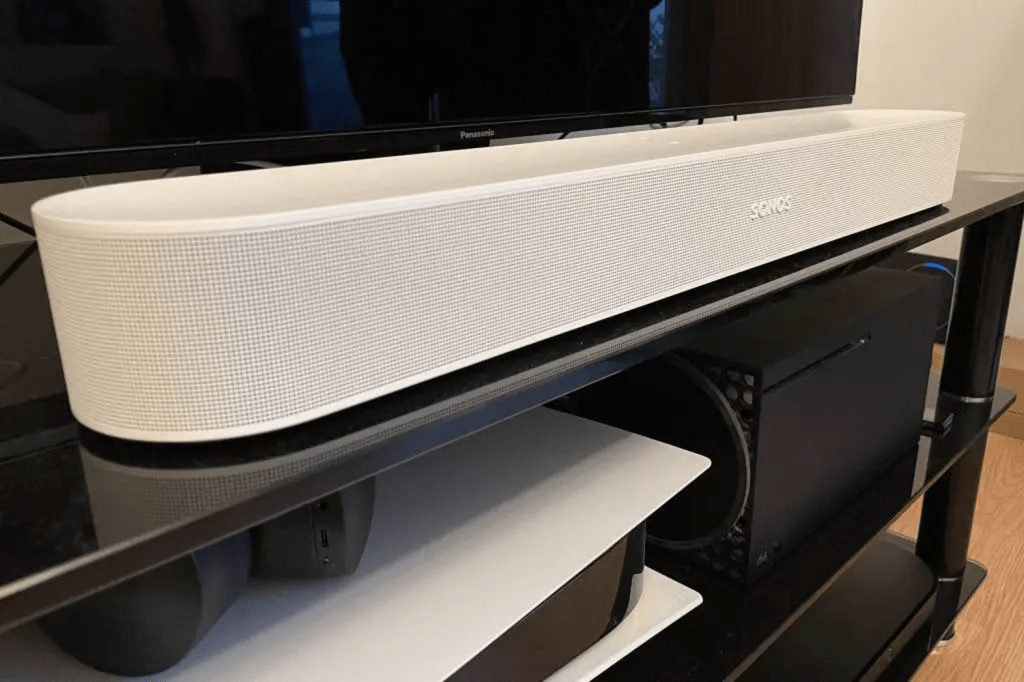
4. Sonos Beam (Gen 2)
Stuff Verdict
The addition of virtual Atmos magic makes an already excellent compact soundbar even more appealing
Pros
- Atmos works better than you’d expect
- Compact, stylish design
Cons
- Only one HDMI port
- No HDMI passthrough
| Sonos Beam (Gen 2) specs | |
|---|---|
| Dimensions | 651x100x69mm |
| Weight | 2.8kg |
| Speakers | 4x woofers, 1x tweeter |
| Connectivity | Wi-Fi, HDMI eARC, optical, ethernet, IR, AirPlay 2, Spotify Connect |
| Voice assistant | Alexa, Google Assistant |
Not the biggest nor most advanced Sonos soundbar, the Beam is still a winning package. Sonos has managed to squeeze some serious tech into a streamlined slab that’s small enough to sit beneath screens of pretty much any size.
With identical proportions to its predecessor, the second-gen Beam is only set apart by its polycarbonate grille, replacing the fabric finish which fronted the first edition. Flip it around and you’ll find a minimal array of inputs and outputs, including a single HDMI port – now an eARC number.
Why’s that significant? Because it has the bandwidth to carry higher-quality streams, including Dolby Atmos. The second-gen Beam features the same acoustic architecture as the first, but Sonos now employs psychoacoustic techniques across five speaker arrays (versus three on the original Beam) to trick your ears into believing sound is around and above you.
Without upward-firing speakers, it’ll never deliver as much immersion as a full Atmos speaker setup. But the Gen 2 does a surprisingly effective job of replicating overhead effects – and the soundstage is impressively expansive for a compact soundbar. It’s a simple, effective solution for superior sound – and you can always add a Sub if you want more oomph.
- Read more: Sonos Beam (Gen 2) review
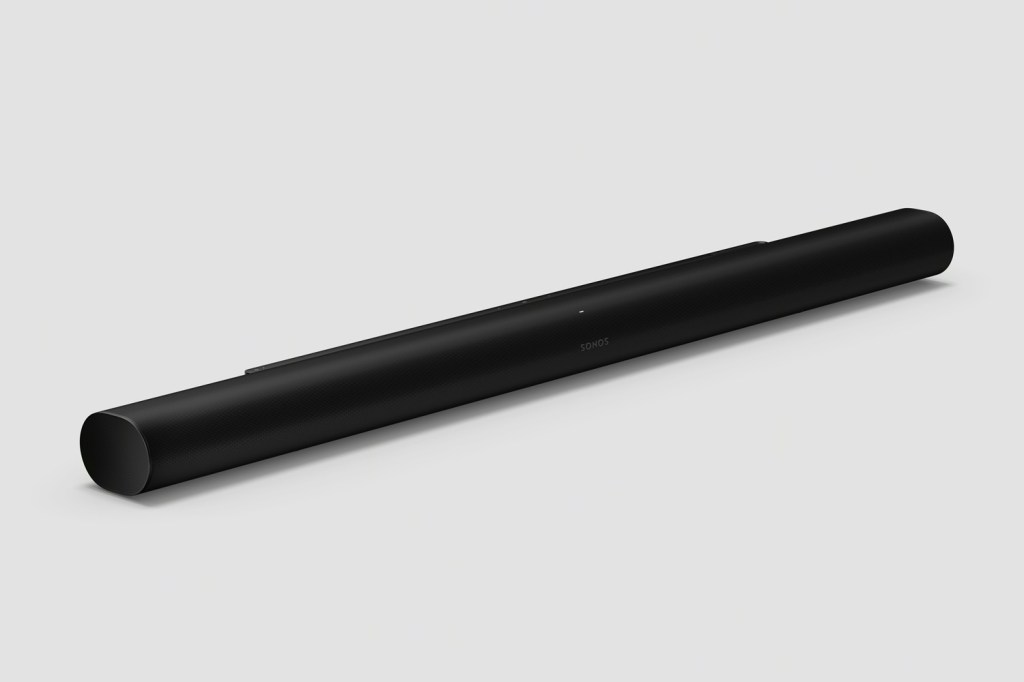
5. Sonos Arc Ultra
Stuff Verdict
At last, Sonos is able to give you the big-screen sound to go with those big-screen pictures.
Pros
- Wide, tall sound and impressive bass
- Adept with music as well as movies
Cons
- No HDMI passthrough or DTS
- App needs some improvement
| Sonos Arc Ultra specs | |
|---|---|
| Connectivity | eARC HDMI only, Wi-Fi, Bluetooth |
| Format | Dolby Atmos, Dolby True HD, Dolby Digital+, Dolby Digital, DTS |
| Streaming | AirPlay 2, Sonos App |
| Dimensions | 1178 x 110.6 x 75mm, 5.9kg 46.4 x 4.4 x 3 in, 13 lb |
Is there a soundbar easier to recommend to people with money to spend than a Sonos Arc Ultra? Maybe not.
It looks good, it does not take up masses of space under a 55in+ TV. It sounds great flying solo for both music and films, and it slots into the multi-room system better-known than any other. Spoiler: it’s Sonos.
Granted, this was the one soundbar that gave us some minor setup headaches. And since 2024, Sonos’s rep for ease of use isn’t quite what it was. Touching the nearest wooden speaker cabinet we can find, though, we’ve had no issues after that initial setup.
There are no fewer than 14 drivers in this 117cm long home cinema tube, and they are quite the team. You get far better bass than its predecessor the Arc soundbar, and there’s an inviting velvet texture to the mids that does wonders for the presentation of vocals when the entertainment you want is more Tom Waits than Tom Cruise.
Sure, despite clear imaging here, the full Samsung Q990F will smoke this soundbar riding solo with Dolby Atmos tracks. While powerful-sounding, the lack of a separate subwoofer also limits bass depth slightly and means the low-end on tap here can sound just a mite busy at times.
But the beauty of a Sonos soundbar is that you can build it up at your own pace, with a Sonos subwoofer and surrounds. The ugly part is you’ll end up spending a fortune doing so.
That’s really the main consideration here: do you want to buy into a Sonos system? While there’s no obligation to upgrade, the Arc Ultra also has no aux input, or optical, just Wi-Fi, Bluetooth and the eARC HDMI connector.
Don’t be too put off, though, as this is a lively, dynamic and engaging soundbar we’d be happy to make the heart of a home entertainment setup.
- Read more: Sonos Arc review
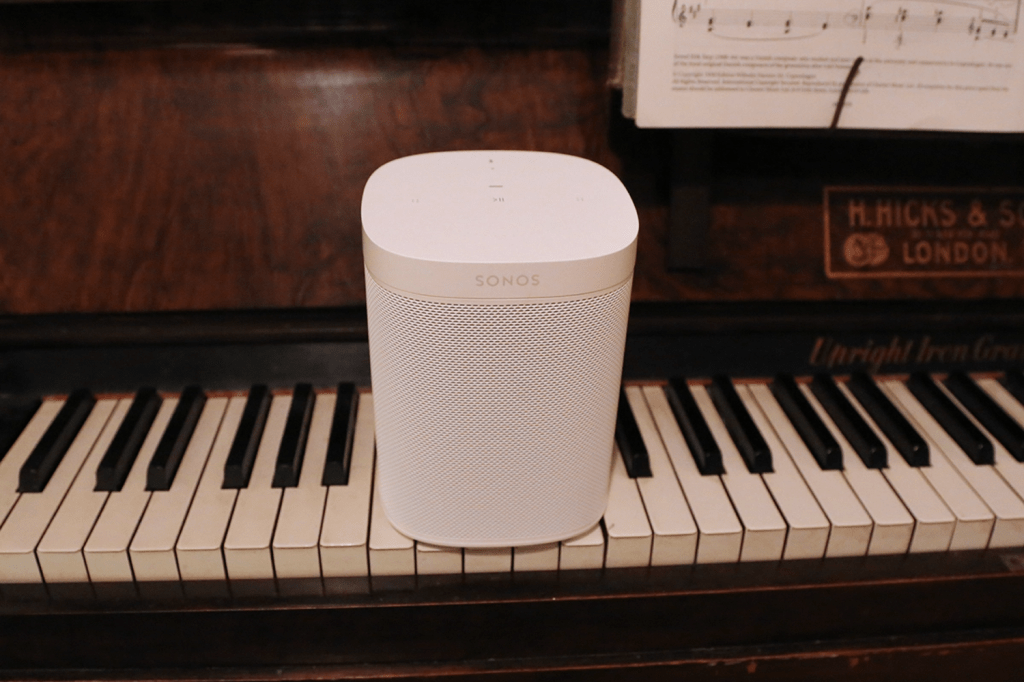
6. Sonos One (Gen 2)
Stuff Verdict
If you care about music and want a speaker you can speak to, the Sonos One (Gen 2) should be close to the top of your wishlist
Pros
- Audio sounds great
- Easy to use setup and app
- Lovely design
Cons
- A little hard of hearing compared to the Echo
| Sonos One (Gen 2) specs | |
|---|---|
| Dimensions | 162x120x120mm |
| Weight | 1.85kg |
| Speakers | 1x midwoofer, 1x tweeter |
| Connectivity | Wi-Fi, ethernet, AirPlay 2, Spotify Connect |
| Voice assistant | Alexa, Google Assistant |
The Sonos One has been replaced by the Era 100, but will still be in stock until supply runs out. Styled like the Play:1, the Sonos One (Gen 2) benefits from a key additional skill: voice assistant support, which means you can ask Alexa or Google Assistant to fire up your favourite playlist. And because Sonos now works with more streaming services, you can source your tunes from pretty much any platform – including Spotify and Apple Music.
There’s good news for audiophiles, too: its sound quality is basically identical to the Play:1’s. Despite relatively dinky dimensions, the One delivers plenty of rich bass, without drowning out the detailed mid-range. Vocals are clear and well-projected, while treble is clean and controlled. All from a compact package that’s simple to control and easy to position.
What’s new with Gen 2? More memory, more processing power and Bluetooth Low Energy on-board. That’s pretty much it. Otherwise, it’s the same superb smart speaker as it was before. You can still combine two Ones to create a stereo pair, and you can still ask your digital helper for assistance as you need.
- Read more: Sonos One review
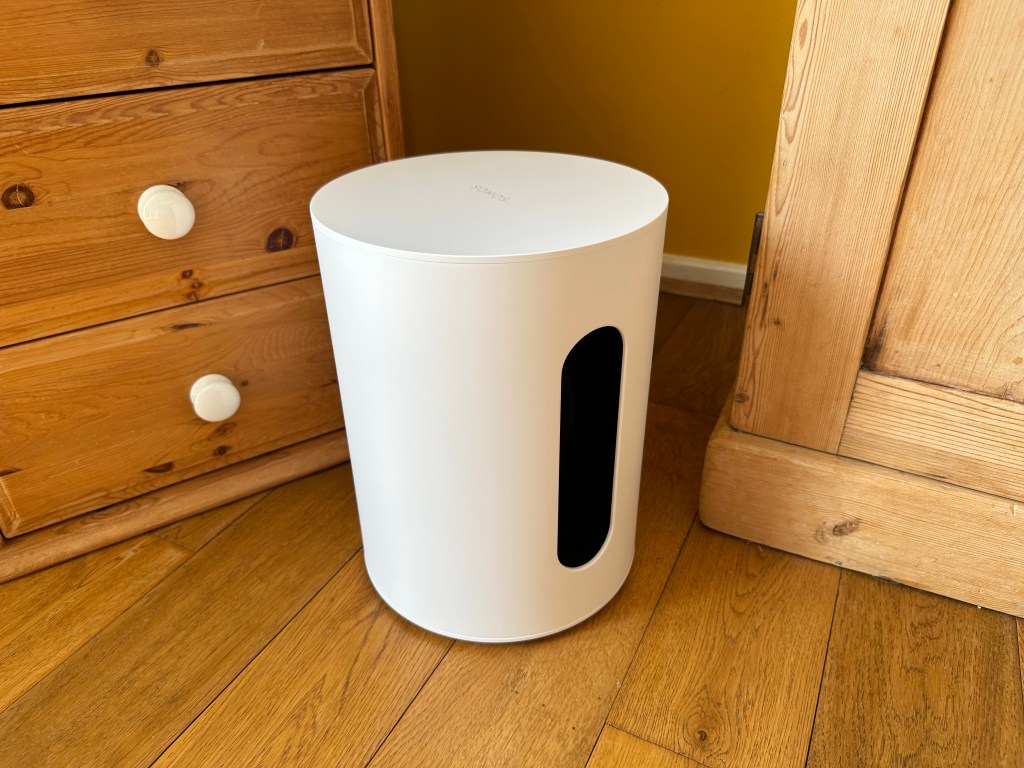
7. Sonos Sub Mini
Stuff Verdict
A wireless woofer with zero rattle, the Sub Mini is an expensive but powerful way to flesh out your Sonos setup
Pros
- Powerful yet refined, with no distortion
- Seamless setup and pairing
Cons
- Bigger homes need the main Sub
- Can be paired with Sonos gear only
| Sonos Sub Mini specs | |
|---|---|
| Dimensions | 230x230x305mm |
| Weight | 6.35kg |
| Speakers | 2x 6in woofers |
| Connectivity | Wi-Fi, Ethernet |
| Voice assistant | None |
Like the full-size Sub, the Mini is a wireless woofer which adds extra oomph to your Sonos setup. But as its compact moniker suggests, the Mini is a neater fit for smaller rooms, making it the perfect partner for soundbars such as the Ray and Beam, plus Sonos’ One-series speakers.
A cylinder with a hollowed-out centre, the Sub Mini could be mistaken for a minimalist stool. Its one-colour matte finish is Sonos to the core, while the dimensions – 305mm tall by 230mm across – mean it’s easy to position. Its 6.35kg weight is also a lot easier to shift than the 16kg Sub.
In testing, we found the setup as seamless as we’ve come to expect from Sonos kit: simply tap your smartphone on top to share Wi-Fi details via NFC. You can fire up the app for Trueplay tuning, too.
Dual 6in drivers inside deliver serious bass capabilities. There’s both punch and quality to the output, bringing soundtracks alive without drowning out dialogue. It’s nicely balanced, adding weight that doesn’t overwhelm. And we experienced zero rattle.
- Read more: Sonos Sub Mini review

8. Sonos Ray
Stuff Verdict
There are non-Sonos options with better connectivity for the price, but this is the cheapest way to get an stylish, straightforward Sonos soundbar
Pros
- Lovely Sonos design
- Budget by Sonos’ standards
Cons
- Patchy Bluetooth remote support
- No HDMI support
| Sonos Ray specs | |
|---|---|
| Dimensions | 559x95x71mm |
| Weight | 1.95kg |
| Speakers | 2x tweeters, 2x woofers |
| Connectivity | Wi-Fi, Ethernet, Optical, AirPlay 2, Spotify Connect |
| Voice assistant | None |
Sonos isn’t known for affordable audio gear, but the Ray is a convincing soundbar at a more accessible price. And despite the budget status, the Ray bears all the hallmarks of Sonos build quality. At just 56cm long, it’s undeniably compact – and some 10cm shorter than the Beam – meaning it can easily fit beneath smaller TV sets. An optical port lets it connect to cheaper, older sets, but there’s no Bluetooth or HDMI.
Setup is straightforward: you can scan a passcode on the device, or the Ray can emit a tone to be detected by your phone’s microphone. Voice assistant support is only available if you have a separate smart speaker, but Trueplay tech is there for automatic sonic adjustment to suit your room. Touch controls mean you can tap to command it, though the Ray is primarily meant to connect to the Sonos app via Wi-Fi or Ethernet.
For most homes, the forward-projecting array of two tweeters and two mid-woofers will do plenty to fill the space. Sound quality is superb – better than many bigger bars – while modes such as Speech Enhancement can usefully improve certain soundtracks. That said, you might be better off with the beefier Beam if your cinema room is sizeable, or if you demand Dolby Atmos.
- Read more: Sonos Ray review
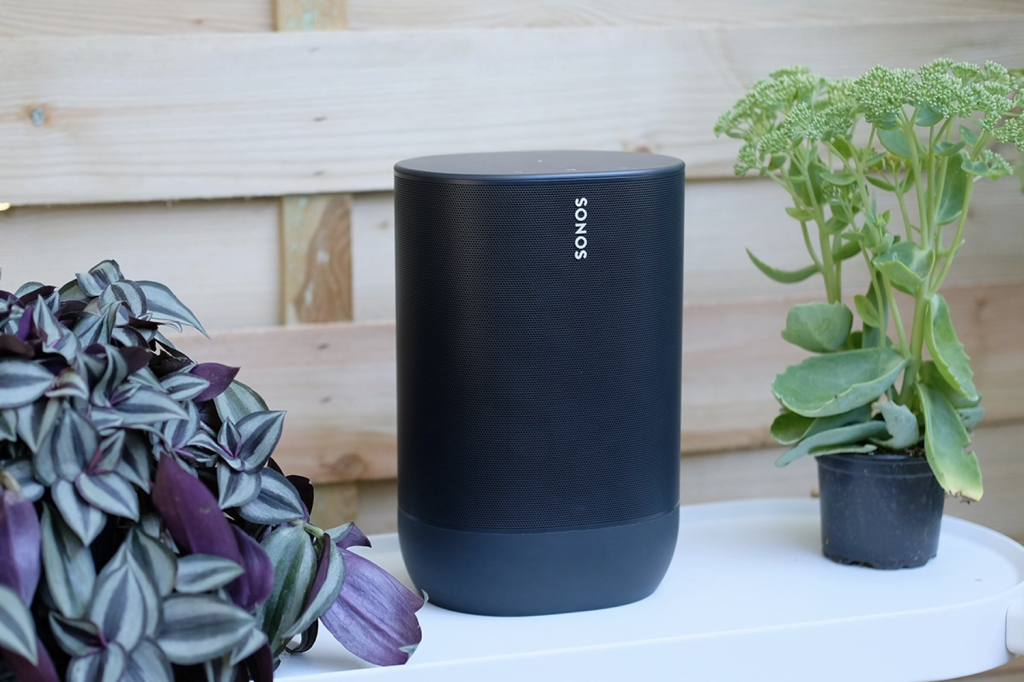
9. Sonos Move 2
Stuff Verdict
Beefed up audio and a longer-lasting battery – a winning combo for Sonos’ portable speaker
Pros
- Excellent audio upgrade
- Hardy construction and brilliant battery life
Cons
- No Google Assistant
- Rubbery material around the base
| Sonos Move specs | |
|---|---|
| Dimensions | 224x16x12.7cm |
| Weight | 3kg |
| Speakers | 2x angled tweeters, mid-range woofer (class D amplifiers for each) |
| Connectivity | Bluetooth 5.0, Apple AirPlay 2, Wi-Fi 6, USB-C |
| Voice assistant | Alexa, Sonos Voice Assistant |
Sonos took its sweet time to make a battery-powered wireless speaker. But it was worth the wait, and the second generation is even better. Movable and built to last, the Move 2 is an attractive package that’s splash-resistant and topped by handy touch controls. It also has the best wireless range of any Sonos speaker, so you shift it to the garden and keep the tunes coming.
And those tunes sound sweet indeed. Equipped with a forward-facing mid/bass driver and downward-facing tweeter, the Move is more than punchy enough to deliver the beats outdoors. But despite how hard it hits, there’s real control and authority to the bass – and plenty of texture too, matched by poise and detail in the mids. In fact, the Move 2 excels in every respect: it’s comfortable with big dynamic variation and offers a sizeable soundstage.
Auto Trueplay smarts mean the Move 2 can detect when it’s been moved and adjust its audio output to suit the new surroundings. You can also tweak the EQ in the excellent partner app. It’s super easy to integrate into your Sonos setup – and when you add countless streaming services and voice assistant support into the mix, it shapes up as a no-brainer.
- Read more: Sonos Move 2 review

10. Sonos Five
Stuff Verdict
A big, grown-up speaker with limited smarts but plenty of power
Pros
Cons
| Sonos Five specs | |
|---|---|
| Dimensions | 364x203x154mm |
| Weight | 6.36kg |
| Speakers | 3x midwoofers, 3x tweeters |
| Connectivity | Wi-Fi, ethernet, 3.5mm line-in, AirPlay 2, Spotify Connect |
| Voice assistant | None |
Basically a re-branded Play:5 with extra processing power, the Sonos Five is the least intelligent speaker in this line-up. It has the same design, the same six drivers inside and still no voice assistant support. So what does it have? Sound quality in spades. Designed to deliver outstanding audio over Wi-Fi, the Sonos Five serves up big, authoritative sound. If you’re replacing a full Hi-Fi system with a Sonos speaker, this is the one to do it with.
Its clean, streamlined chassis can be stood up or laid flat: the Five will cleverly detect how it’s positioned and adjust output to suit. If tinkering is your thing and you’ve got an iOS device, you can also deploy Trueplay tuning tech to tweak the listening experience.
Cash to spare? You can combine two Fives to create an extremely capable stereo system, or use the pair as left-right surround separates to accompany a Sonos soundbar and Sub. The Five also features that rare thing among Sonos speakers: a 3.5mm aux-in – so you can hook up a turntable, tape deck or pretty much any other analogue source.

11. Sonos Sub (Gen 3)
Stuff Verdict
A bit of a blunt instrument – but if extra bass is what you’re after, the Sonos Sub certainly delivers
Pros
- Simple setup
- Full-bodied bass
- Can be used in pairs
Cons
- Not the most punchy
| Sonos Sub (Gen 3) specs | |
|---|---|
| Dimensions | 402x389x158mm |
| Weight | 16kg |
| Connectivity | Wi-Fi, ethernet |
| Voice assistant | None |
In the world of subwoofers, the Sonos Sub is a work of art. Not a rumbling behemoth to hide to the side of the TV, this is a bass box you’ll be proud to display. Despite its 16kg heft, the Sub benefits from comparatively slim dimensions. And because it can be oriented vertically or horizontally, it’s easier to tuck away than most competitors – especially as wireless connectivity means it only needs a power cable.
But what does the Sub actually do? Add great big dollops of extra bass to any Sonos speaker system, that’s what. It makes the most sense as a sidekick to the Beam or Arc, giving cinematic soundtracks proper punch – but it can also complement Sonos’ music boxes.
Yes, it’s an expensive upgrade. And no, it’s not exactly subtle. While the Gen 3 benefits from more memory and an upgraded processor inside, its sonic delivery is hardly nuanced. But if you’re looking for loud, proud and powerful, this is the accessory your Sonos setup needs. Well-heeled and ready to rumble? The third-gen also supports pairing two Subs in the same room, if you really want to annoy the neighbours.




